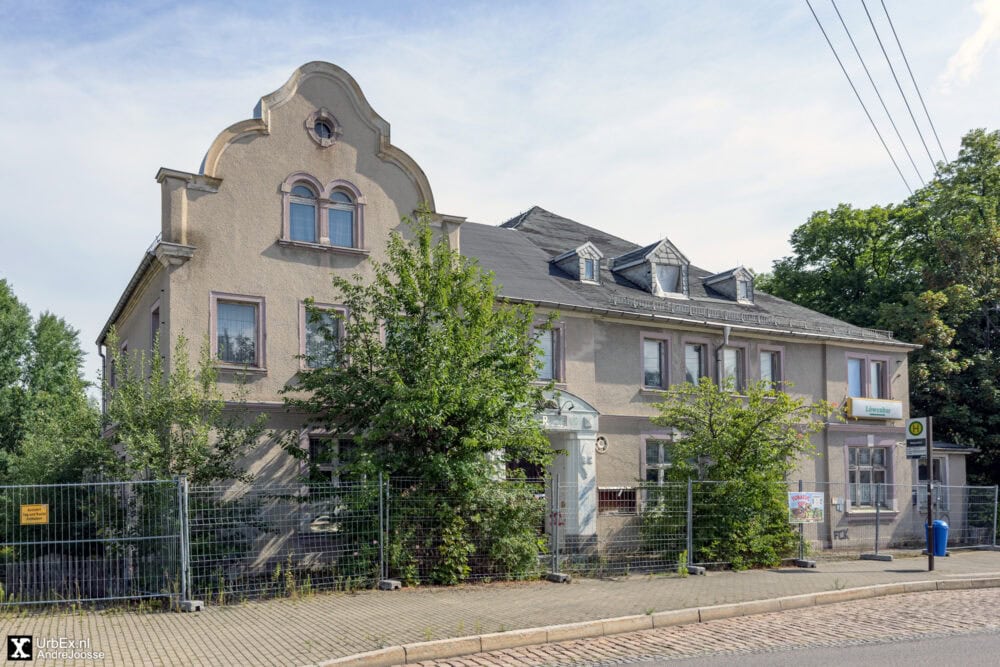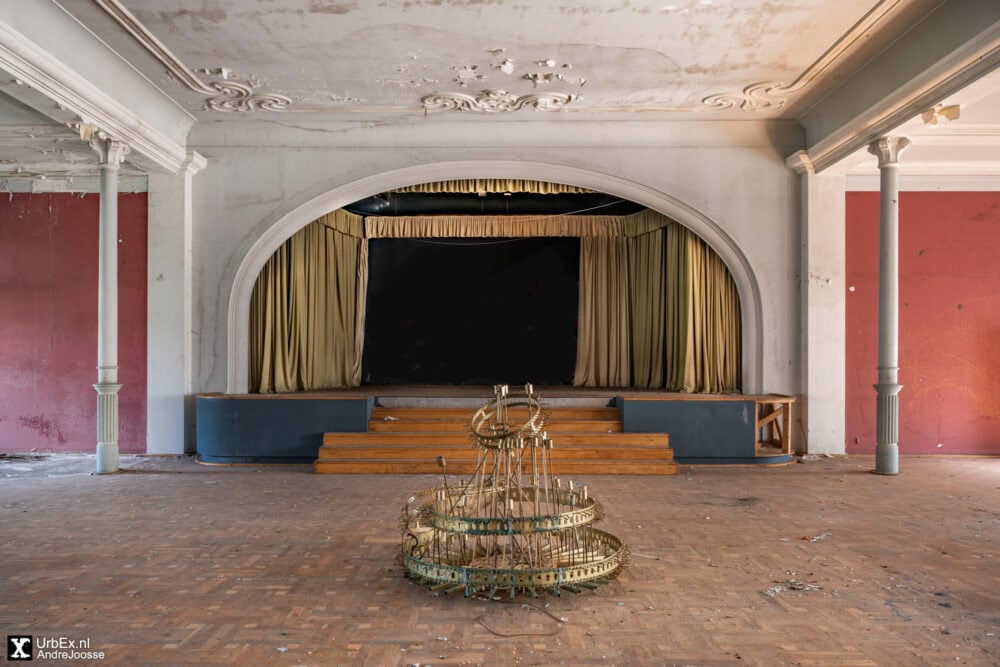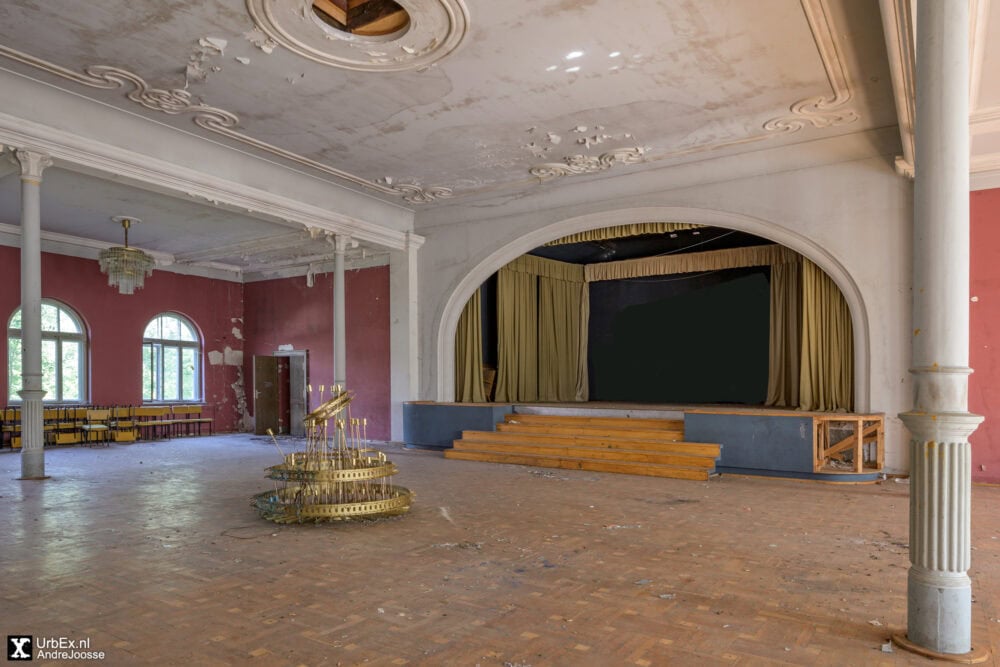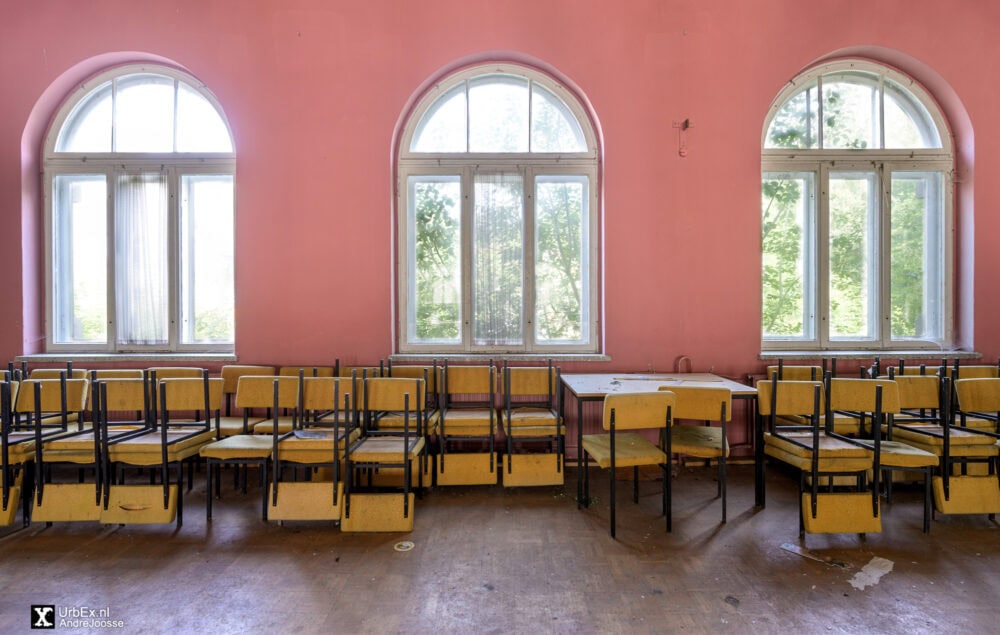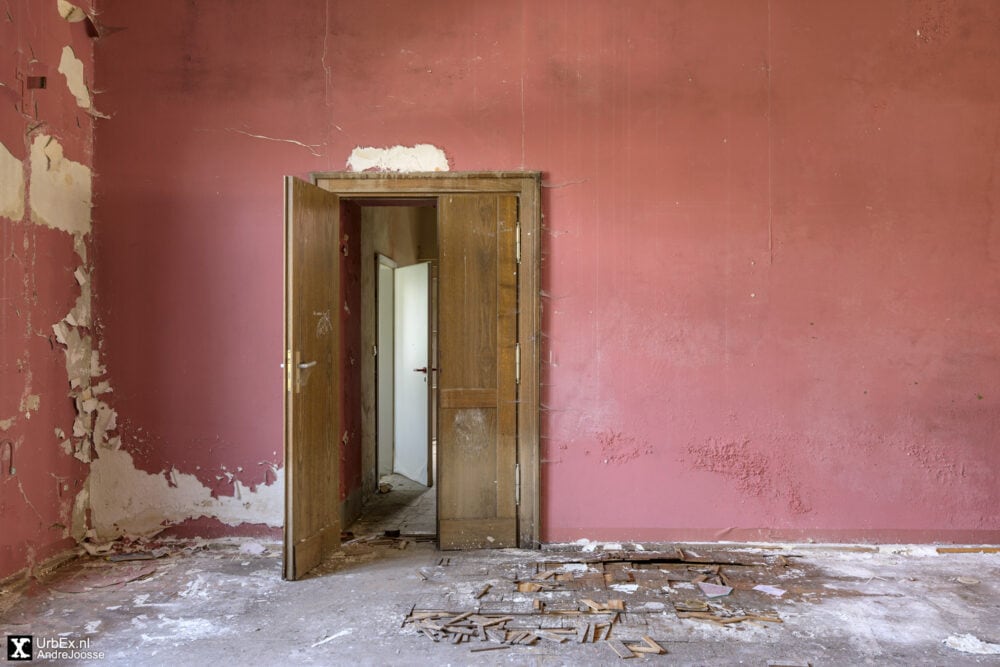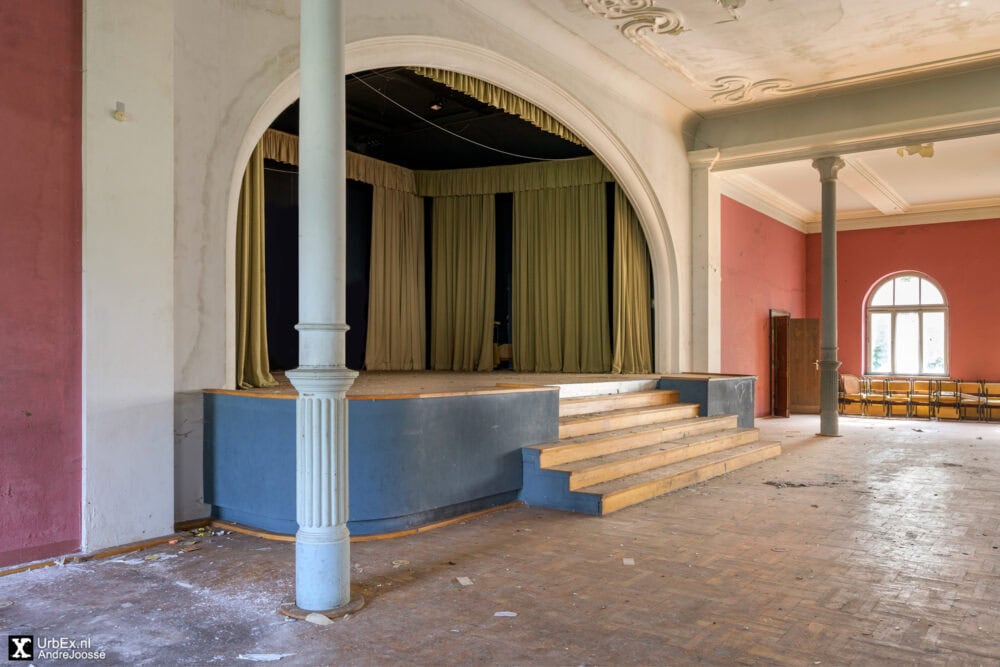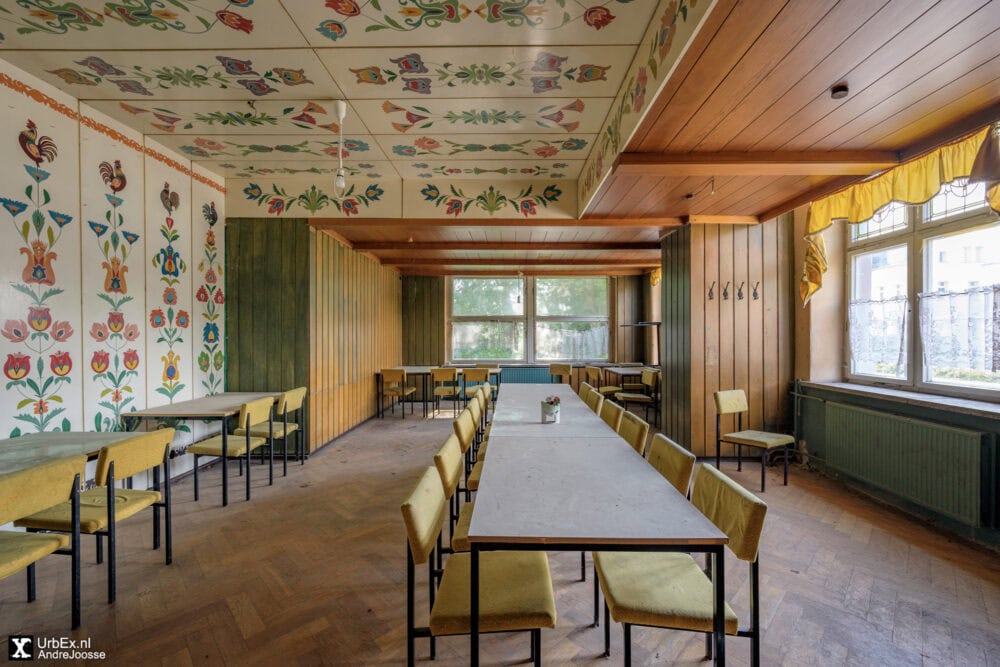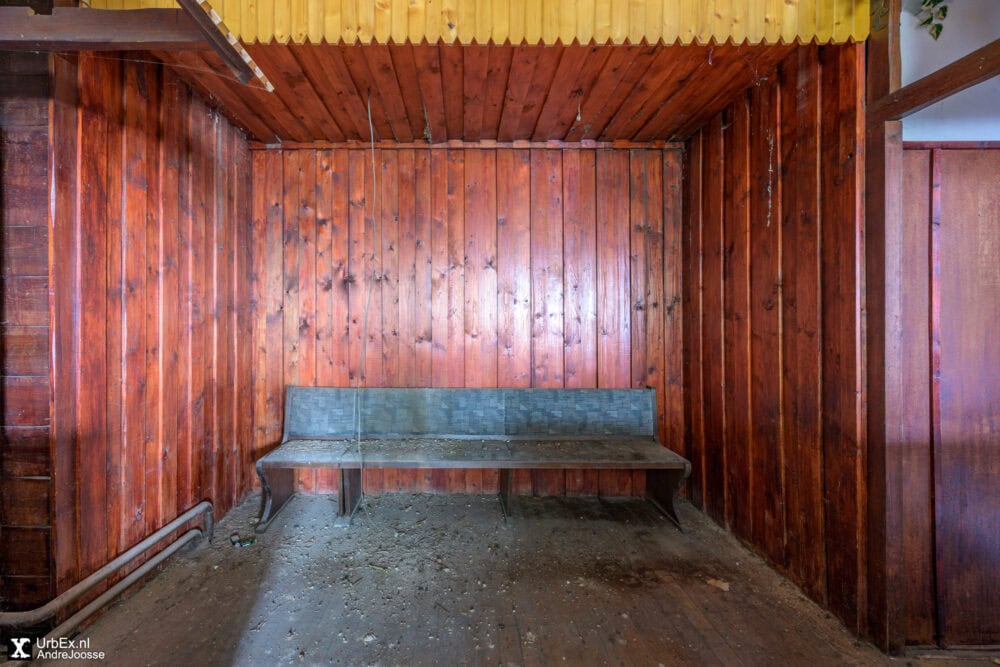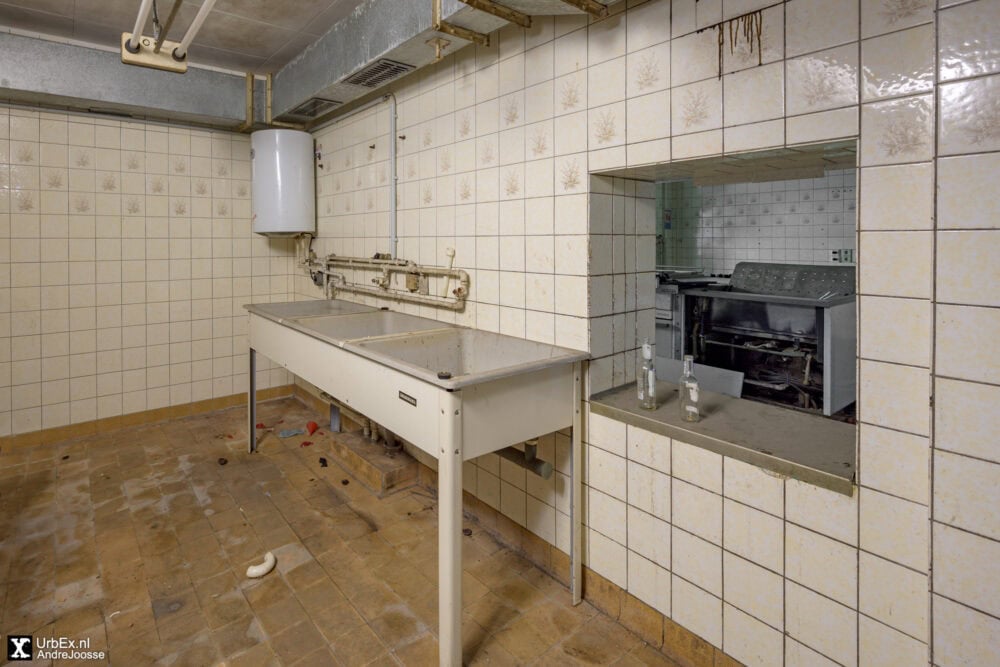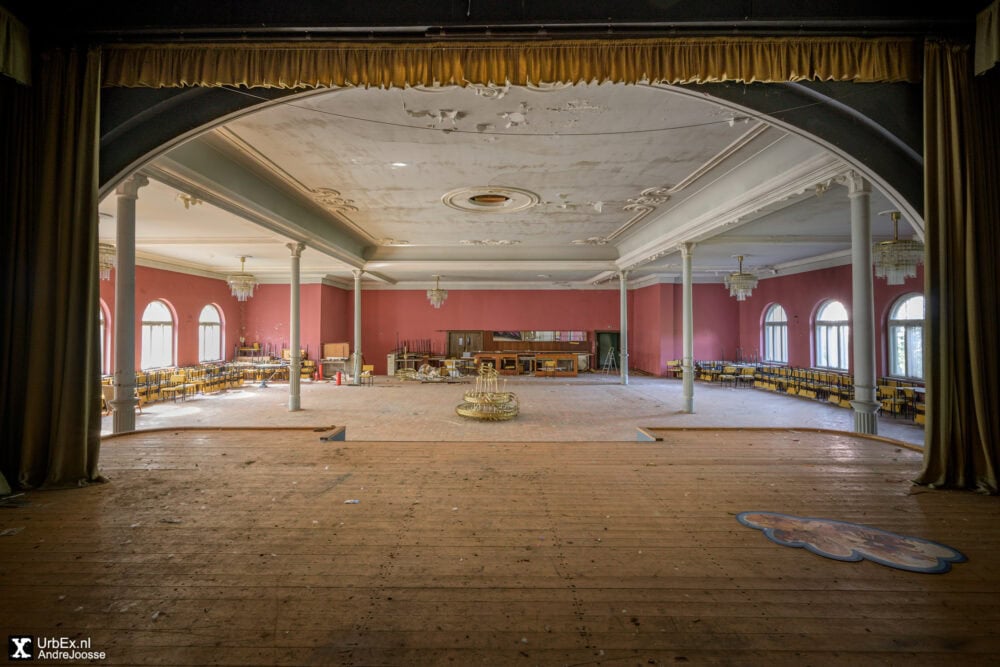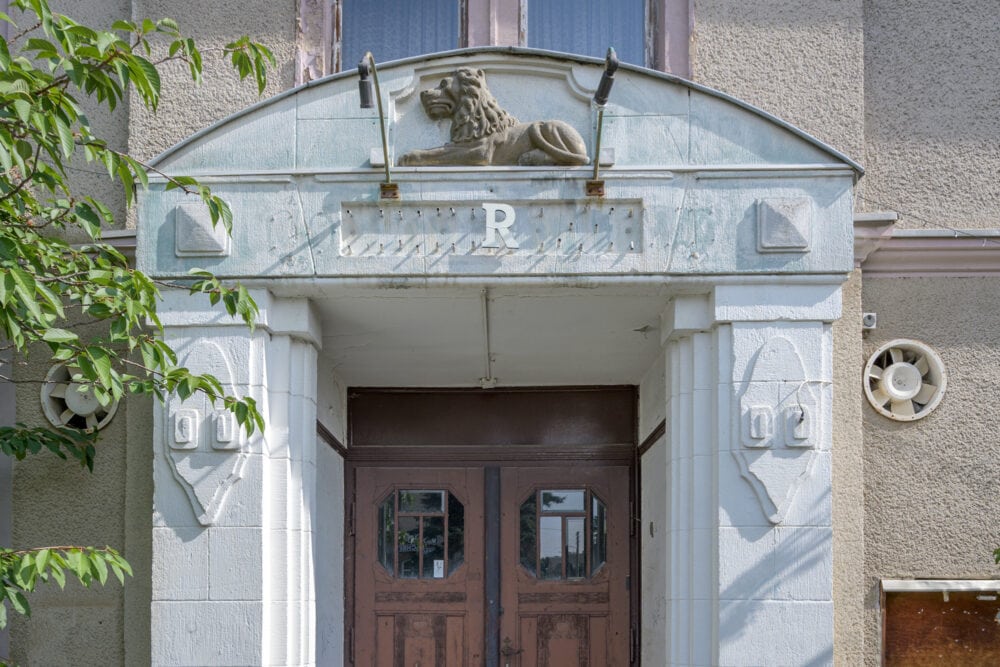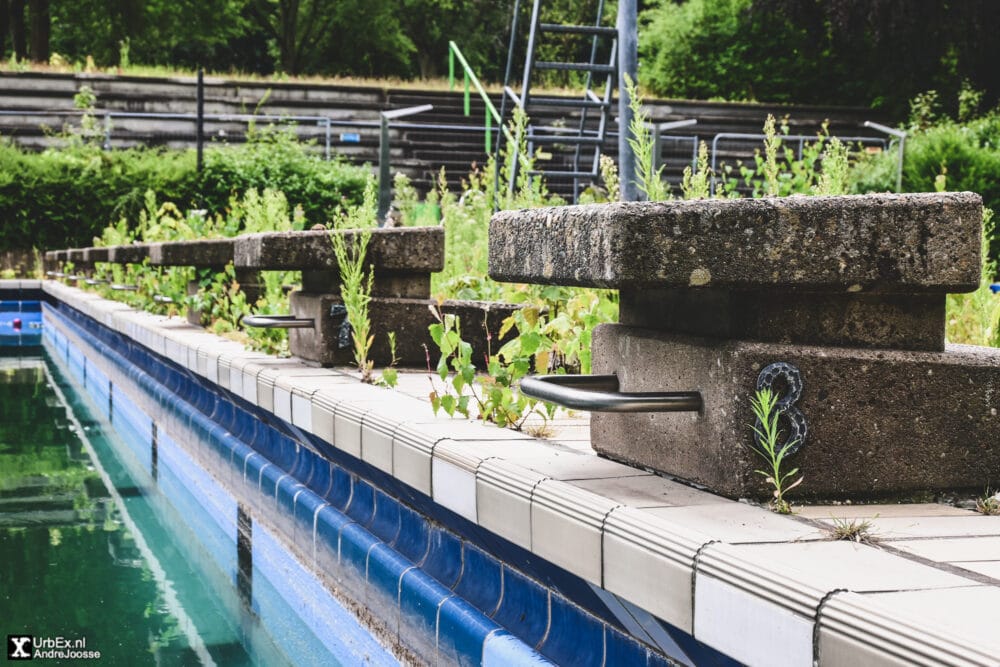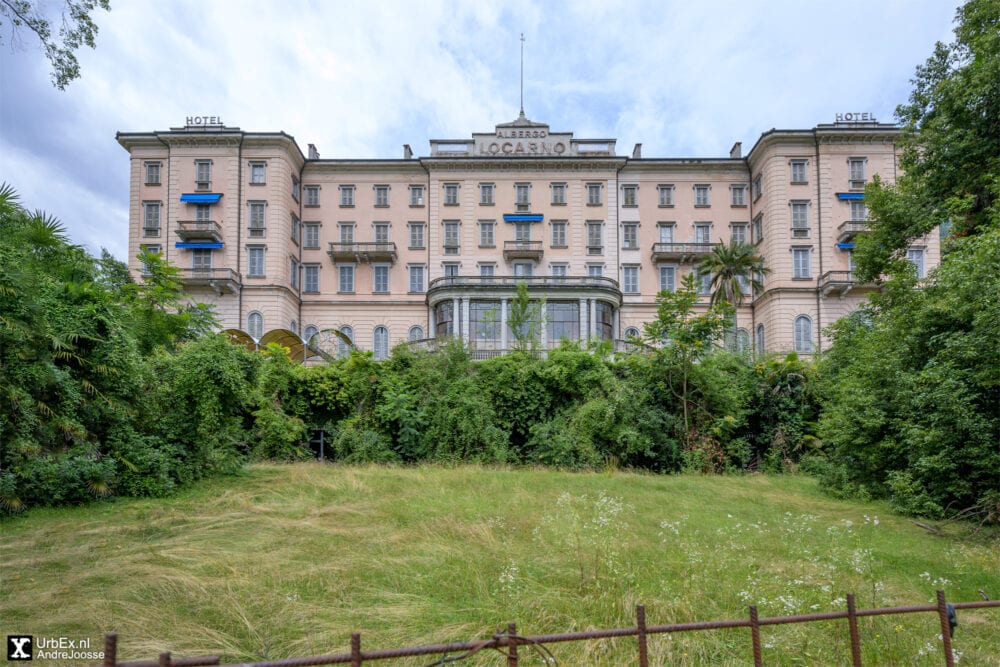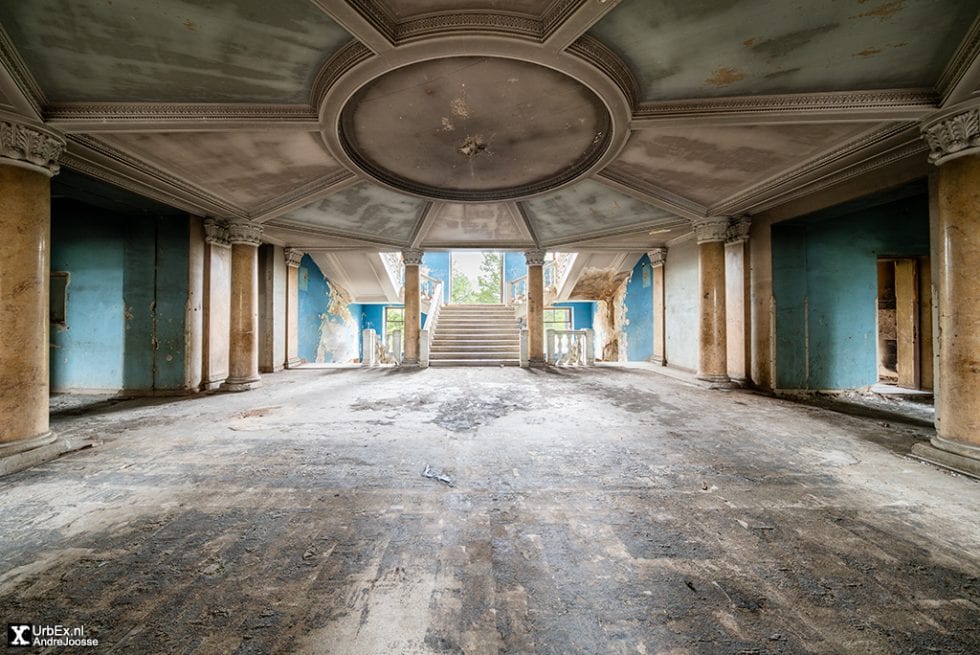Gasthof Goldner Löwe
Explore Gasthof Goldner Löwe in Oberrabenstein. From its beginnings in 1445 as the tavern ‘Gäßnerschenke’ to its rise as a popular dance hall and restaurant in 1882, this site has seen many changes. Discover how it became a beloved escape for Chemnitz’s residents during the industrial age and its varied uses throughout the 20th century, leading to its eventual abandonment in 2005.
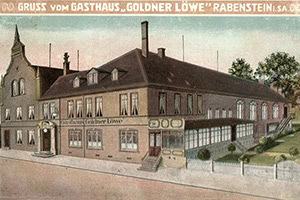
In 1445, the tavern ‘Gäßnerschenke’ was built here. It was later demolished. In 1882, Ernst Ferdinand Dittrich built a large dance hall and restaurant on the old site. He called it ‘Gasthof Goldner Löwe’.
During the industrial age, this area became a getaway for the growing city of Chemnitz. Oberrabenstein became popular for those wanting to escape city life. In the early 20th century, the hospitality industry thrived with many new restaurants and hotels.
Volkshaus für Rabenstein
After expansions in the late 19th century, the property changed hands several times. In 1928, the ‘Verein Volkshaus für Rabenstein und Umgegend’ bought it. A private company bought the place in 1934, after the cooperative dissolved.
During the Nazi era, the property was expropriated. Post-war, it was owned by the Socialist Unity Party of Germany. The dance events with the Karl Walter orchestra were famous. From 1953, it operated as ‘HO Restaurant Goldener Löwe’.
Social hub
During its peak, Gasthof Goldner Löwe was not only a place for dining and dancing, but also a social hub where locals gathered for various events and celebrations. The vibrant atmosphere and lively music made it a cherished venue for many generations. After the Berlin Wall fell, it was used mainly for advertising events and managed by a private leaseholder. The popular dance events stopped.
The restaurant closed in 2002. Only the beer garden opened occasionally in the summer. By 2005, the site was abandoned. The eventual decline of the restaurant and its closure marked the end of an era. I visited the old guesthouse in 2020.
